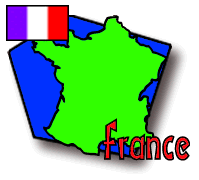Person of the Day: DIA headquarters staff
Place of the Day: Association DIA (Dialogues and Initiatives)
- DIA - Organisation Non Gouvernementale de Solidarité Internationale
- B.P. 170
- 13474 Marseille Cedex 02
- France
- Tel: +33-04.91.90.78.00
- Fax: +33-04.91.90.85.38
- Email: dia@diwan.net
- www.dia-europe.org
Tech Fact of the Day: langue d'oc and langue d'oïl
Group Dispatch, June 5

Questions? Ask Ethan ![]() !
!
Return to Fast Facts
 |
 |
 |
 |
 |
|
Itinerary/ Journal |
Discussions |
About France |
eDscape Projects |
Scrapbook |
|
|
|
|
|
|
|
Copyright 1997-2004 BikeAbout. All rights reserved.
